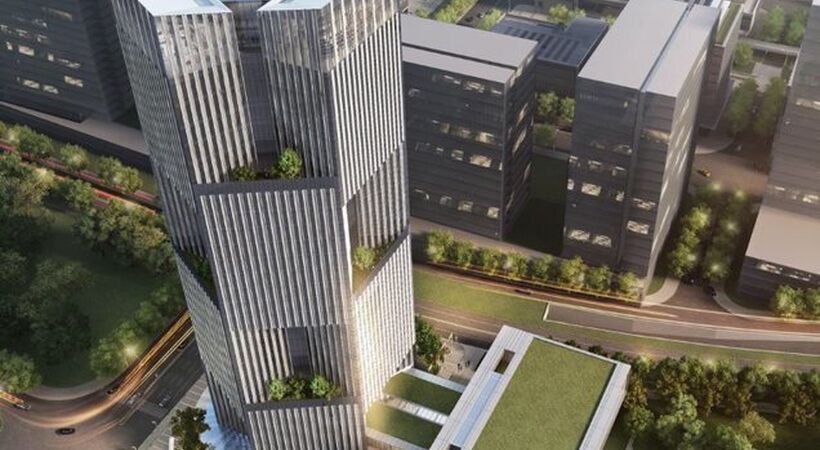ABB has supported the construction of the New Development Bank (NDB) Headquarters in Shanghai by installing an intelligent and integrated building controls system to manage indoor lighting, electric curtains and windows that involve more than 8,000 control circuits. Energy savings of more than 15 percent compared to conventional systems can be expected.
Covering an area of 126,000 m2 and constructed by Shanghai Municipal People’s Government, the modern and intelligent NDB Headquarters will be completed in 2021. The building design is expected to become a landmark development in the Shanghai World Expo Park as it brings together environmentally friendly, human and function-oriented spaces while satisfying design needs to reduce the building’s impact on the environment.
ABB China’s electrification business area lead business manager, James Zhao, said: “ABB plays an active role in building a low-carbon society and supporting China to realize the ambitious goal of carbon neutrality by 2060 through safe, smart and sustainable solutions. In the intelligent building field, we deploy leading technologies to integrate various building control systems and provide integrated building control, energy efficiency management and data analysis service, helping Chinese customers significantly improve efficiency of energy applications and reduce environmental impacts, writing a sustainable future.”
At the heart of the NDB Headquarters is the ABB i-bus KNX intelligent building control system. The intelligent lighting control system involves a total of over 1,200 light switch control circuits, more than 3,200 light diming control circuits, over 1,800 electric window control circuits, and more than 2,600 electric curtain control circuits.
In this project, ABB’s building control system connected to the intelligent management platform for the NDB Headquarters and the cloud service centre of Shanghai World Expo Park. In this way, data can be fed back to the management platforms in real time for integrated statistics and analysis of energy consumption, allowing facilities managers to make informed decisions on where and how lighting and energy can be controlled to meet occupancy demand.



